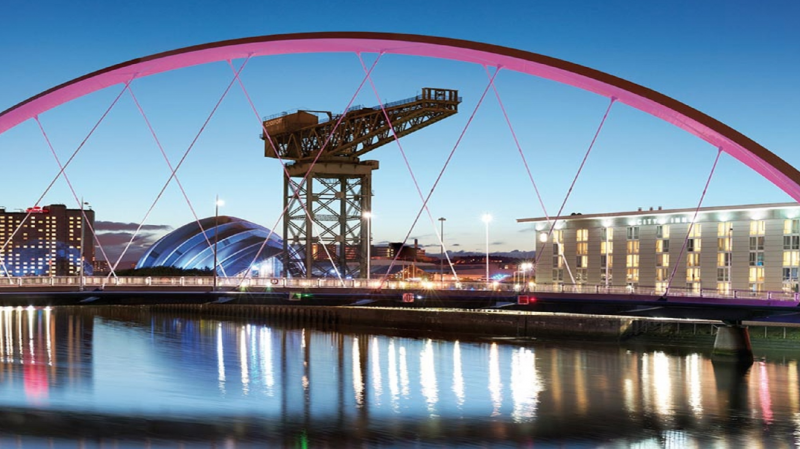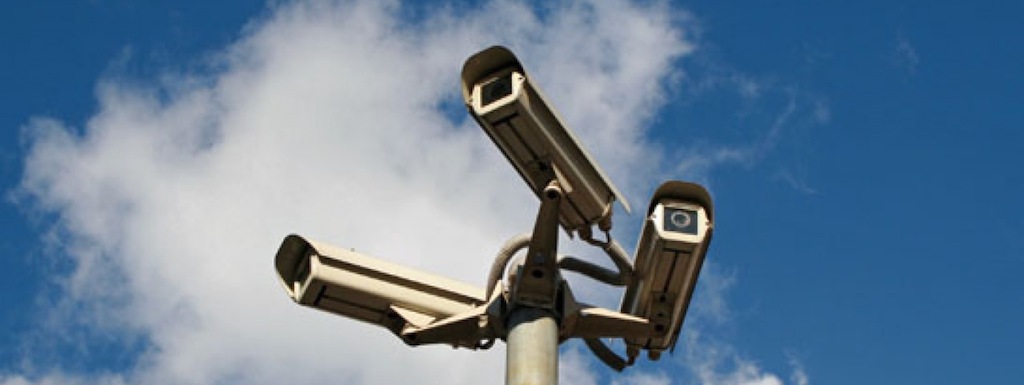SmartGov Citizen Summit Report

Smart Governance for Sustainable Cities Cycling Citizen Summit
Summary
Participants
São Paulo: NGOs, municipality, activists, journalists, researchers, students;
Glasgow: experts, policy makers, researchers, cycling activists, the general cycling public; Utrecht: citizens, cycling associations, public officers from local and regional government, researchers, a traffic psychologist.
Introduction
The SmartGov research project focuses on smart governance where cooperation between citizens and local governments and mediated by new digital technologies can be utilized to create more sustainable cities. Within this research we previously organized three virtual conferences that were attended by public servants and researchers from the cities of São Paulo, Utrecht and Glasgow. This year’s event centered on citizens by involving them in a Citizen Summit. Their presence was important since smart governance is not merely a top- down process but is also shaped by bottom-up movements in society. Therefore, the Citizen Summit was designed to gain citizens’ opinions, ideas and contributions in the specific domain of cycling. Cycling, in relation to urban planning and new technology was chosen as an appropriate policy dolman because it was an arena active in all three cities and this would allow important comparisons and contrast to emerge. Our research highlights that citizens and local governments collaborate in very diverse ways but also that citizen participation is a relational issue requiring considerable effort. Therefore, it is crucial to discover how citizens can gain a bigger role in smart, sustainable urban development. For example by gaining insights into how and their ideas and initiatives can be supported, understanding their motivations, and identifying strategies to engage a broad variety of citizens.
Main goals of the Citizen Summit:
1. Looking back at forms of citizen participation in the three cities : What have we
learnt from citizen-municipality collaboration mediated by new technologies? What are citizens’ experiences and what went well in these practices? To what extent are these patterns similar or different in the three cities?
2. Recommendations for the future: What do participants recommend to improve technology-enabled collaboration or to sustain successful practices?
Online plenary session 1: What have we learned from past experiences?
São Paulo
Infrastructure and related information: The development of (safe) bicycle routes is still in an early phase and in addition information on existing routes is scarce. Herein, technologies may help by for instance sharing of maps and road information. Participants highlighted that generic map apps, for instance Google Maps and Waze are not much useful. However, specialized apps, for example Strava, are very helpful.
Knowledge exchange: The sharing of personal experiences between citizens was beneficial for motivating citizen engagement.
Technology-use: People use technology to meet, engage, and debate as well as to promote the use of bikes. Open data, both from public and private databases, can be used to map routes, and share information etc. among users and the public. The increase of bike-sharing apps also contributes to using bicycle more often as an urban mobility.
Lack of governmental responsiveness: After the online public hearings the municipality did not give a feedback on the ideas presented by citizens.
Glasgow
Health and wellbeing: Cycling was perceived to be an innately healthy practice, but the local environment compromised the benefits, especially in relation to pollution and safety on the roads;
Infrastructure: There was a recognition that the cycling infrastructure needed improving, for example, the separation of different types of traffic, a need of shelters and parking, on street parking in bike lanes and poor quality roads.
Policy development: There was recognition that policy developments in cycling were taking place. For example, “Next bike” rentals; creating new bike lanes, bike information online, etc. (although progression has been slow);
New technologies: A number of new digital technologies are being used by cyclists. “Fix my street’’ reporting of road conditions; cycling apps for mapping routes where pollution levels are low and biking is easy, and a weather app for checking weather conditions.
Utrecht
Communication: Meetings should be structured and regular and they should provide feedback and results back to the participants.
Improved quality of information exchange : Easier access to government; the openness of off- and online information; quick availability of data; local government is now much more open to citizens’ ideas and discussions;
Multilevel governance: The different attitudes of local and national governments as well as EU policy-making can bring about contradictions and tensions (i.e. local government can be open and willing while national government may hinder collaboration processes, in addition, the EU can exert pressure on national governments to stimulate citizen engagement);
Local-specific situations: Opposing citizen groups (e.g. cyclists vs. environmentalists); for a good representation of society the inclusion of different groups is key; local and regional governments have to balance between various interests;
Resource availability: Sufficient funds are needed to follow up policy implementation; lack of resources hinder engagement activities because the public sees no results of their input; also, funding needs to be addressed for good ideas such as smart city watch or road quality apps.
Main themes emerging from the three cities:
Role of technologies in enabling interactions: Technologies increasingly enhance information exchange and facilitate communication and collective actions between citizens and government.
The level of controversy: Some issues are non-controversial where citizen engagement for fixing problems is evidently positive (e.g. repairing road potholes). However, when issues are controversial different interests and perspective clash. For instance, infrastructure developments often entail the shared use of public space (roads, parks, buildings etc.) can be fractious due to these various claims made by road users and this is reflected in citizen engagement.
Citizen input and policy-making: There can be a contrast between citizen engagement and actual actions of governments. There has to be some connection between citizen contribution /demands and actual implementation. In practice the three cities had different histories and practices for citizen engagement and feedback
Questions:
‘’Where does the money for the projects come from?’’
The Province of Utrecht: ‘’We have funds, especially because cycling has recently been labeled as part of road safety. We try to find a balance between all forms of transport. Taking measures for bikes helps other modes of transport as well. These can be cost-saving solutions, for instance a tunnel for bikes reduces traffic conjunctions for cars and makes it safer for bikers’’.
Glasgow City Council: ‘’We struggle with finding funds and this may be due to a lack of investment over many years. We are trying to balance the needs of everyone using public roads. The Scottish Parliament is supportive of promoting active travel, and the national government is giving some funding too, though this is a recently emerging development. Funding is limited compared to what we would like to have to spend on a developing city’’
Plenary session 2: What can we recommend for the future?
Utrecht
Open data: The availability of public (open) data should be enhanced as means to improve public issues and not because it is a fashion. It is furthermore crucial that opening data open have an explanation about their usage. Even more important is to present the context of the data (metadata). Only such additional information can make the data useful for collaboration and data-exploitation.
Signaling sites on the road: This is important to enthuse and draw attention of citizens to engage in improving urban issues. One example is the ‘’traffic-lights reporting website’’ that allows citizens to announce redundant traffic light operations to change practices. This was very successful as many people took part in it. Government actually responded by physically changing the infrastructure but also by providing feedback to citizens’ input.
Broad representation: Including many types of citizens is essential.
Managing expectations: This is part of the relational work needed to engage citizens; governments should make it clear in advance what output can (not) be expected and
react on citizens’ contributions (also when they are not utilized).
Early citizen engagement: People and interest groups should be included already at the start of policy discussions; this prevents a lot of struggles and delays in a later
phase.
Integral approach: The actual practice is the co-existence of silo’s where themes and
groups are separated; this should make place for an integral view, for instance for cycling should be considered as a part of health and climate policy. This also relates to ‘’substantial solutions’’ combining themes such as education, safety, and space management.
Government participation: Citizens take initiatives and approach and invite the government to work together to develop these grassroots ideas.
Cycling as a rewarding activity: To consider kilometers cycled for reducing insurance fees/benefits, providing discounts in local shops etc. (e.g. Ring-Ring social enterprise).
Glasgow
Use of data: There is existing data that could be used to better inform public policy in this area. Also, there are apps specifically for cycling which could be publicized more.
Changing perceptions: To realize a behavioral change around cycling cultural and attitudinal change is required. Advocating the benefits of cycling needs to be reinforced with pro-cyclist policies;
Engagement between users and stakeholders: Mechanisms to engage a wide variety of citizens need to be encouraged. This could be achieved through websites and apps as well as traditional community councils;
Infrastructure: To make the best use of existing infrastructures; using current bike lanes; developing new bike lanes; fixing pot-holes; creating shelters for bikers; and, enforcing existing pro-cycling policies.
São Paulo
Improve communication: Communication between citizens and government needs improvement. This can be facilitated through technology, open data but also through simplified and more interpretable data revealed.
Mobility information: Online and offline information in urban spaces concerning public services (for instance boards, outdoors, bus stops, bus stations, etc.) is essential. However, not everyone has digital availability- in Brazil, more than 30% of the population do not have access to the Internet. This is a situational context. If the municipality would like to improve the city mobility through ICT use, they have to make online information in these urban spaces available.
Meeting points: Both physical and online meeting sites are needed where stakeholders can gather and discuss their ideas and recommendations. Examples are Mobility Lab, Innovation Lab.
Concluding remarks
Exchanges between people with varied backgrounds and perspectives during the Citizen Summit identified and explore developments in each city.
The international gathering also highlighted that these cities have many common features and that there is a basic need to better understand and advance technology- enabled collaboration for more livable environments.
The Summit has also given insights into the relationship between citizens and the government in the three cities:
In São Paulo citizens generally perceive that that the local government is not listening or accepting citizens ́ ideas. Moreover, the feeling is that the government makes citizen engagement difficult, which has many factors rooted in history, societal structure, and culture. Cyclists are fighting for more space literally and figuratively: to increase and to debate bike-mobility in the city. However, these active cycling citizens feel that government does not always react on an appropriate way to their demands. In Glasgow and Scotland, the tradition is for urban transport policy to be centralized and consequently there is limited grass-roots interaction between cyclists and the local authority. Local engagement mechanisms do exist, such as Community Councils, but they have limited power and resources to enact change. Mechanisms to further support citizen engagement and to facilitate interactions between cyclists and the local authority would be hugely beneficial. In Utrecht the cooperation between citizens and local government has improved a lot in recent times as the municipality has become more open and responsive. At the same time, the fairly advanced bike-infrastructure and deep-rooted cycling culture makes the role of Dutch citizens different than in São Paulo (less proactivity and political struggles). Yes, separate ‘’theme-islands’’ within the municipality make collaboration difficult: there is a dissonance between a department working on cycling and a department working on citizen engagement. The connection between government and citizens need to be stronger to produce meaningful solutions and actions that citizens can see.
SmartGov research project and contact details
Project website: http://smartgov-project.com/
Project leaders in the three countries:
Prof. Albert Meijer, Utrecht University, The Netherlands: a.j.meijer@uu.nl Prof. Alexandra Cunha, FGV, Brazil: alexandra.cunha@fgv.br
Prof. William Webster, University of Stirling UK, Scotland: william.webster@stir.ac.uk


